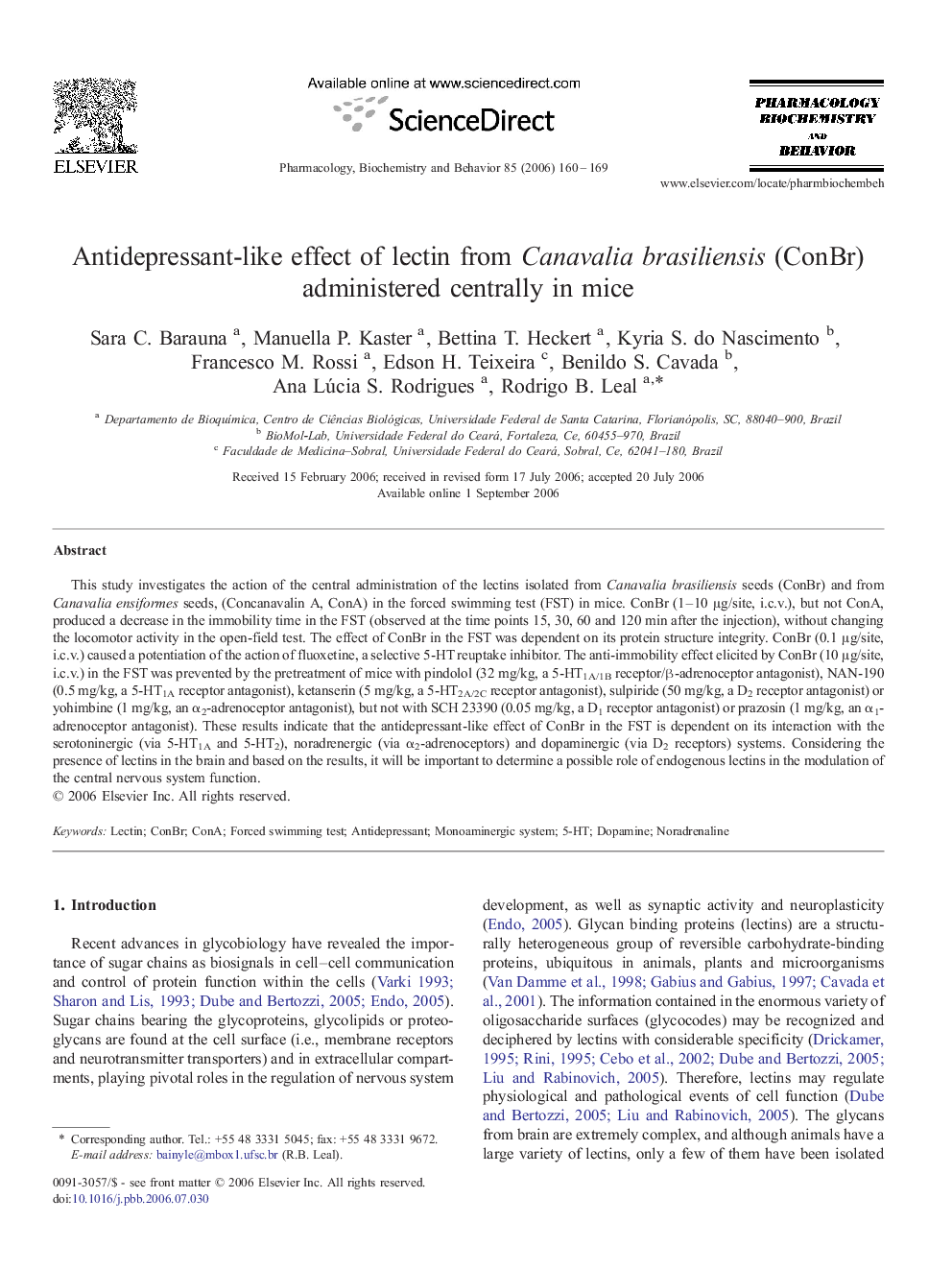| Article ID | Journal | Published Year | Pages | File Type |
|---|---|---|---|---|
| 2014497 | Pharmacology Biochemistry and Behavior | 2006 | 10 Pages |
This study investigates the action of the central administration of the lectins isolated from Canavalia brasiliensis seeds (ConBr) and from Canavalia ensiformes seeds, (Concanavalin A, ConA) in the forced swimming test (FST) in mice. ConBr (1–10 μg/site, i.c.v.), but not ConA, produced a decrease in the immobility time in the FST (observed at the time points 15, 30, 60 and 120 min after the injection), without changing the locomotor activity in the open‐field test. The effect of ConBr in the FST was dependent on its protein structure integrity. ConBr (0.1 μg/site, i.c.v.) caused a potentiation of the action of fluoxetine, a selective 5‐HT reuptake inhibitor. The anti‐immobility effect elicited by ConBr (10 μg/site, i.c.v.) in the FST was prevented by the pretreatment of mice with pindolol (32 mg/kg, a 5‐HT1A/1B receptor/β‐adrenoceptor antagonist), NAN‐190 (0.5 mg/kg, a 5‐HT1A receptor antagonist), ketanserin (5 mg/kg, a 5‐HT2A/2C receptor antagonist), sulpiride (50 mg/kg, a D2 receptor antagonist) or yohimbine (1 mg/kg, an α2‐adrenoceptor antagonist), but not with SCH 23390 (0.05 mg/kg, a D1 receptor antagonist) or prazosin (1 mg/kg, an α1‐adrenoceptor antagonist). These results indicate that the antidepressant‐like effect of ConBr in the FST is dependent on its interaction with the serotoninergic (via 5‐HT1A and 5‐HT2), noradrenergic (via α2‐adrenoceptors) and dopaminergic (via D2 receptors) systems. Considering the presence of lectins in the brain and based on the results, it will be important to determine a possible role of endogenous lectins in the modulation of the central nervous system function.
